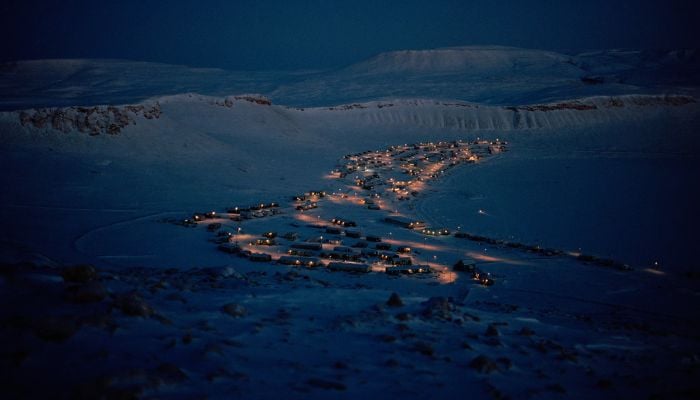Utqiagvik, Alaska, plunges into 65 days of continuous darkness
Utqiagvik begins two months of darkness in annual polar night
November 19, 2025

The northernmost town in the United States has officially entered its annual period of perpetual twilight.
Utqiagvik, Alaska, began its “polar night” this week, marking the start of roughly 65 days without direct sunlight.
In the region, the sun set on November 18 and will remain set till January 22, 2026.
The axial tilt of Earth causes this astronomical phenomenon. In astronomy, this axial tilt is referred to as obliquity is the angle between an object’s rotational axis and its orbital axis, which is the line perpendicular to its orbital plan; equivalently, it is the angle between its equatorial plane and orbital plane.
The axial tilt of Earth is about 23.5 degrees relative to its orbital plane and is primarily responsible for seasons and varies in a cycle of about 40,000 years.
In absence of this tilt, the seasons would be much less extreme, or they would not exist at all.
The Northern Hemisphere leans away from the sun during winters and for communities located far enough north like Utqiagvik, the sun remains below the horizon for an extended period.
Around 5,000 people are residing in the neighbourhood.
Only natural light for the next two months will come from a faint twilight glow near the southern horizon and the spectacular illumination of the Aurora Borealis dancing in the sky above.
The polar night will also be followed by extreme cold, with temperatures often plummeting well below zero degrees Fahrenheit.
This period of darkness is a prominent characteristic of life in the Arctic. But, it is a temporary state.
Around mid-May,the cycle of the seasons will be reversed and Utqiagvik will experience the extreme opposite weather with over 80 days of continuous daylight, known as midnight sun.
For now, the community settles in for the long, dark winter, a testament to life in one of the planet’s most extreme environments.









